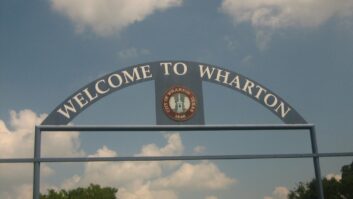WASHINGTON � It will come as a surprise to absolutely no one reading this that there�s a radio noise spectrum problem. Will a new effort at the Federal Communication Commission bring real improvement?
�
The commission�s Technological Advisory Council is finally set to investigate changes and trends to the radio spectrum noise floor to determine several key issues: whether there is an increasing noise problem; the scope and quantitative evidence of such problems; and how a noise study should be performed.�
�
This is not a broadcast-specific initiative, but we at Radio World are betting that radio broadcasters are going to speak up, based on all the comments about noise floor problems in the recent FCC AM revitalization proceeding. The Society of Broadcast Engineers pleaded recently with the FCC to launch an interference management plan for the AM band. And noise concerns are not limited to the AM band either (read a 2009 article for just one example of past discussion about these issues).
�
A notice of inquiry released by the commission�s Office of Engineering and Technology on June 15 opens the door for anyone involved in broadcast, public communications, amateur radio or the telecom industries to provide documented evidence of noise interference concerns.�
�
The council is seeking comments and answers to questions about radio spectrum noise, a move that is being seen by the industry as a welcome first step.�
�
Among those calling attention to the initiative is Tom King, president/CEO of equipment manufacturer Kintronic Labs, who has been an active voice on AM revitalization issues.
�
�I cannot emphasize too strongly the opportunity that this NOI presents to AM, FM and TV broadcasters to submit to the FCC TAC well-documented measurements of noise interference that is adversely impacting the reception of their broadcast services,� said King.
�
�The TAC will be using the response to this NOI to help define realizable goals for the new Spectral Noise Study Group within the TAC to pursue, and ultimately to lead to recommendations for possible changes in the Part 15 rules as well as enhanced regulatory action that will be presented to the FCC chairman.�
�
The TAC is an advisory group to the FCC operating under the Federal Advisory Committee Act. Specifically, this Noise Floor Technical Inquiry will ask for public input on spectrum noise floor � particularly unwanted radio frequency energy from man-made sources � and how those noises have evolved over the past 20 years.�
�
Another veteran engineering observer said it�s about time. �It looks like there might be a small glimmer of hope that the commission is taking the issue of radio noise seriously,� said Steve Johnston, director of engineering and operations for Wisconsin Public Radio, who has talked publicly about how noise affects the FM dial as well.
�
The commission said that although the correlation has been made between rising noise floor in the radio spectrum and the growing number of devices that emit radio energy, the commission has found limited available quantitative data to support the presumption.�
�
As a result, the council will look at number of noise categories including incidental radiators, which are defined as devices like electric motors, light dimmers and power lines; unintentional radiators, such as computers, portable electronic devices and hig-efficiency lights; licensed / unlicensed intentional radiators, which are those devices designed to generate and emit RF energy by radiation or induction like cellular phones, wireless routers and Bluetooth devices; and ISM radiators, which include industrial, scientific and medical radiators like microwave ovens and fluorescent lighting.
�
The council is hoping to get a host of questions answered as part of the inquiry, including the extent of the problem during daylight hours versus during the night, how noise can be distinguished from signals, and how a proper noise study should be performed.�
�
King suggested that stations with Potomac Instruments FIM Series field intensity meters for use in the AM, FM or TV bands consider conducting measurements of known RF emission sources in the respective bands to quantify the level of noise being contributed. �[That�s] one example of measured data that can be submitted in response to this NOI,� he said.
�
Comments are being accepted through Aug. 11, 2016, using the commission�s Electronic Comment Filing System website, which sports a newly streamlined look. File comments under docket number 16-191.
�
A version of this article originally appeared on the website of Radio World, sister publication of Radio magazine.
�










